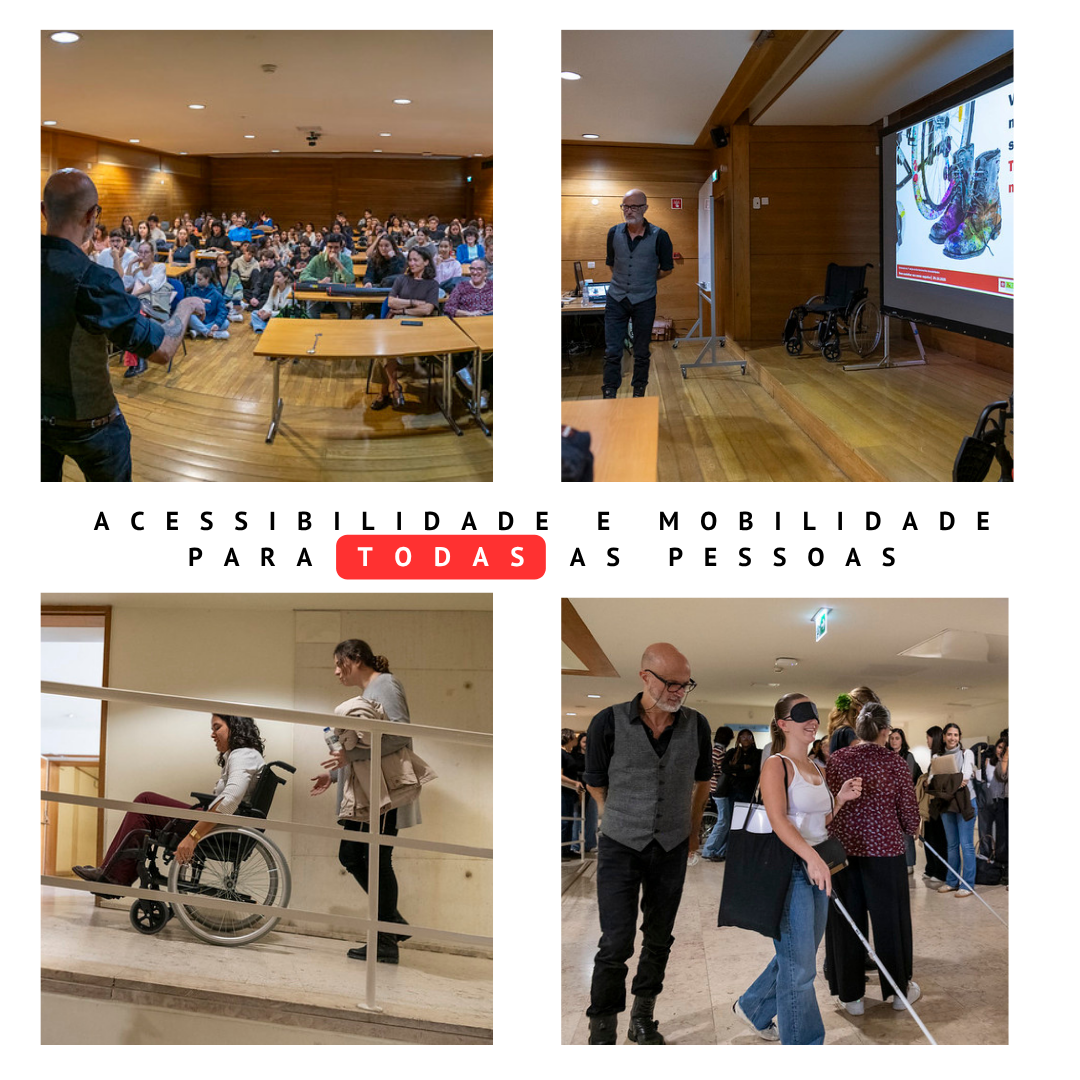News Details
ISCTE students experience accessibility challenges
Updated : 31/10/2025

On October 29, students of the undergraduate course and the integrated master's degree in Architecture attended two practical sessions, dynamized by the National Institute for Rehabilitation, I.P. (INR). The initiative dedicated to the experimentation and application of accessibility, had a lot of participation and aimed to bring future architectural professionals closer to the real experience of the barriers that many people face daily, promoting a reflection on the role of inclusive design in building a more accessible society.
The activity was part of the set of actions that the INR and the Salvador Association have been promoting in the context of the celebrations of the National Accessibility Day, established by Resolution of the Assembly of the Republic No. 297/2021, and which aim to raise awareness among the academic and technical community about the challenges of inclusion and mobility for all people.
Under the motto ‘Accessibility and Mobility for ALL People’, the sessions challenged students and teachers to reflect on the importance of detail in the design of the space: One inch too much can turn a path into a wall, one inch too much inclination can separate freedom from exclusion, and an almost flat pavement can be a real odyssey for someone.
In the parallel workshops, participants had the opportunity to experience wheelchair travel and orientation exercises with cane and sales, directly experiencing the challenges of mobility and spatial perception. In another group, the inspection of a real space was simulated, applying the rules of Decree-Law No 163/2006 and the accessibility checklists used by INR architects.
The feedback was very positive from teachers and students. The professors of the Department of Architecture highlighted the pedagogical and formative value of the experience, considering it an initiative to be repeated in the future. For the participating students, it was a way to experience the accessibility problems of the building itself, which until then were not perceived as real barriers.
The session ended with a moment of sharing learning and proposals for improvement, underlining the importance of integrating accessibility and universal design in academic training and promoting a truly inclusive architectural culture.




